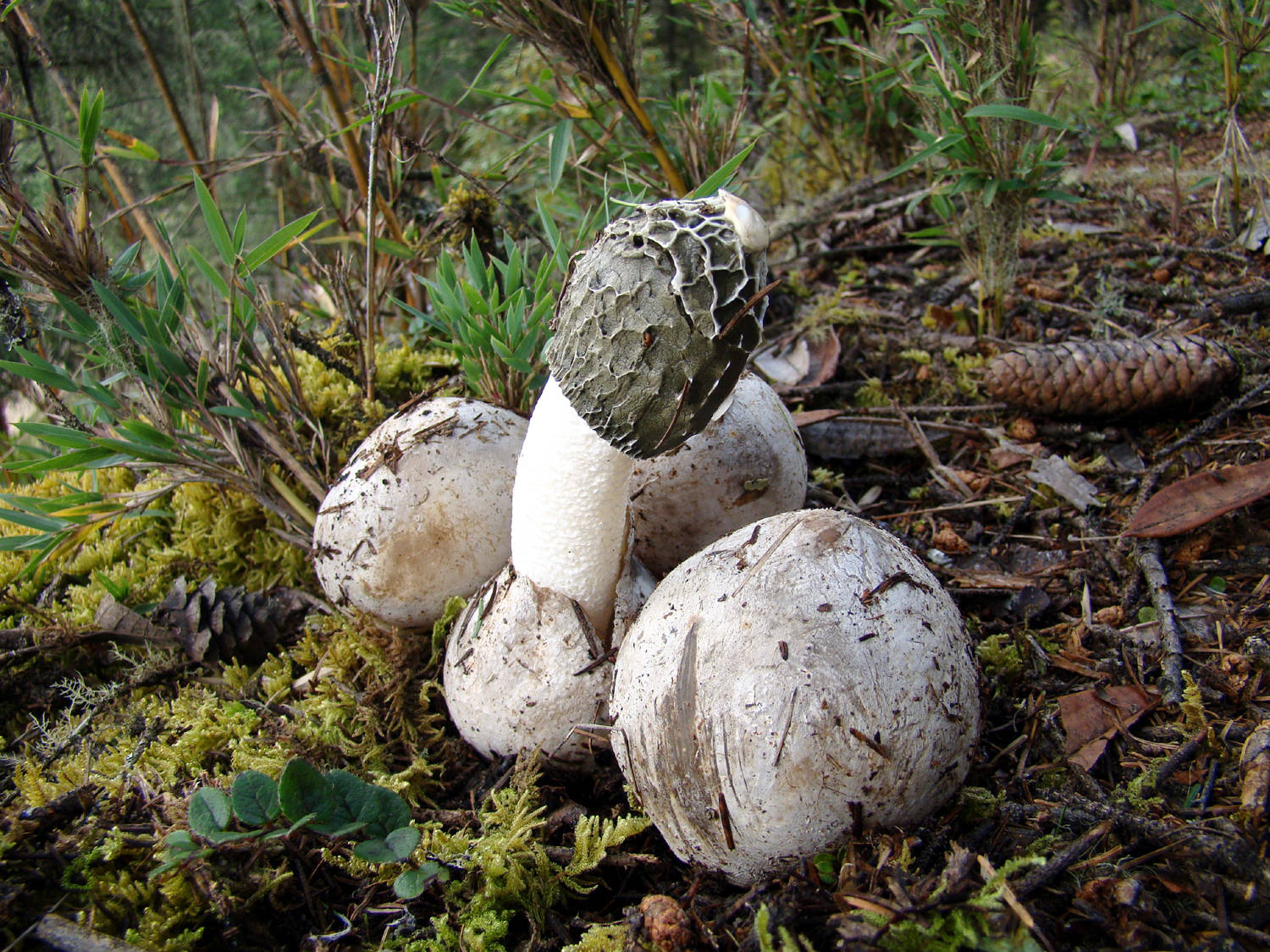
Local name: No local name known
Edibility: The egg stage, which lacks the disgusting smell, is edible though not tasty
Habitat: Scatted to gregarious on rotting wood in gardens and woodland.
Description: Immature fruiting bodies: Initially semi-submerged and covered by leaf-litter, egg-like, 3–5 cm across, attached to substrate. The outer wall of the egg is white to pinkish but there is a thick gelatinous middle layer held between the membranous inner and outer layers. Matured fruiting bodies: The egg is soon ruptured, as the white hollow stalk-like receptacle extends to 10–25 cm tall, the pendulous, bell-shaped head is covered by a mesh-work of raised ribs covered in dark olive slime which contains the spores. This slime has a strong sickly offensive smell which attracts flies from large distances to disperse the spores.
Comments: The stinkhorn is sometimes mistaken inexplicably for a morel, perhaps because of the pitted head and somewhat similar shape. However, the indiscreet odour and slimy spores mass leaves no doubt as to its identity. But it is difficult to identify when it is in the egg stage.



